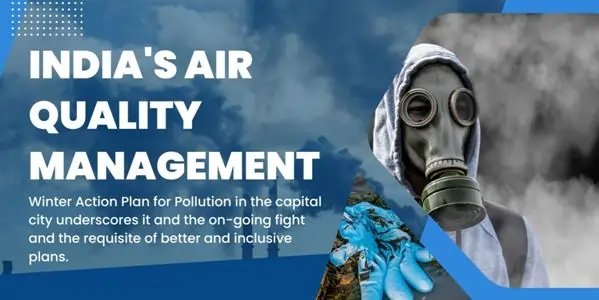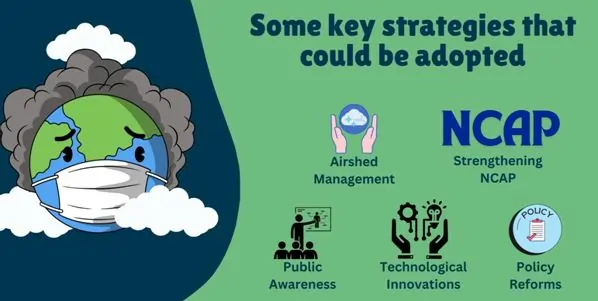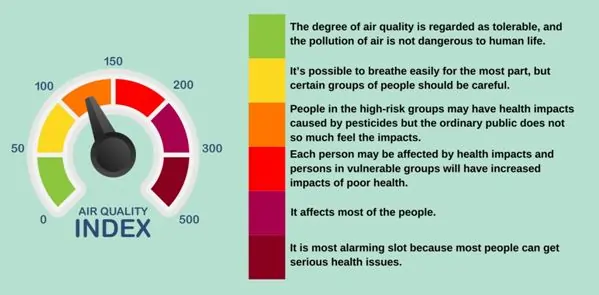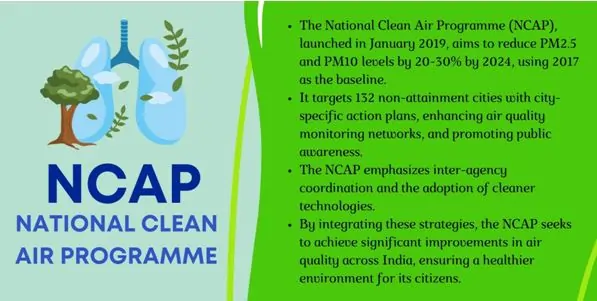
It has been quite a discoursed and a debated subject in India how good or bad the country is when it comes to air quality with episodes of severe air pollution more often than not emerging from India’s metros including Delhi. The issue was touched on in a recent emission-related editorial in “The Hindu” titled the Winter Action Plan for Pollution in the capital city underscores it and the on-going fight and the requisite of better and inclusive plans. This Article seeks to discuss the general framework on air quality management in India highlighting challenges, current efforts and prospect.
The Scope of the Problem
The entire population of India gets 99 percent annual exposure to ambient PM2.5, the worst type of pollution, as per the World Bank. Such exposure results in serious sicknesses such as respiratory and cardio vascular diseases, and are the cause of many early demises per year. Even the economic impacts of air pollution present themselves to be obscene; millions of dollars are lost as a result of decreased labour efficiency, and the health care costs related to air pollution sum up to billions of dollars.
Contemporary Strategies and Their Deficiencies
The NCAP was launched with aim to reduce the levels pollutants which includes particulate matter 2.5 and 10by about 1/3 of the base year 2017. It incorporates 132 cities like delhi. However, the effectiveness of these measures has been questioned due to several limitations like Coordination Issues, a Stewardship of air quality calls for cooperation among different ministries within the central government and with other states. As a result, the pollution control efforts are weakened by the absence of comprehensive plans and the lack of efficient cooperation between agencies.
It is the need for such a holistic approach that this paper will seek to present in enabling managers to achieve organisational objectives in an effective and efficient manner.
Therefore, to tackle air pollution, India requires a more holistic and systematic strategy which requires something more than mere the action plan for some specific seasons. Here are some key strategies that could be adopted:

- Airshed Management: It should also be noted that air pollution does not respect state borders; it is the regional problem. By applying Airshed management, it will be easier to devise better strategies since it looks at the geographical and meteorological analysis of the area where the pollution will disperse.
- Strengthening NCAP: These policies need to be underpinned by the targets and time lines that are substantive and capable of being enforced by NCAP. To achieve positive results, such efforts should be closely monitored; deviations from the plan should be reported ASAP.
- Public Awareness and Participation: Much of the success of an air quality management plan will depend on whether people become aware of the problem and participate in addressing it. This pollutioncan be minimized if there is a change of behaviour which include with less use of Private car, prohibition of open burning of wastes etc.
- Technological Innovations: Supporting this argument, long-term strategies in combating emission include: Developing technologies to support real-time air quality monitoring and possible solutions like investing in technological advance like monitoring services and systems, pollution control technology for industries or cleaner transportation means, etc.
- Policy and Regulatory Reforms: Developing and enhancing environmental laws and policies and the realization that these policies will be enforced will make activities that pollute undesirable. There should also be policies that promote the use of clean technologies and management practices.
Case Study: Delhi’s Winter Action Plan
According to “The Hindu”, these are some of the winter strategies that will be implemented in Delhi this winter of 2024. These measures include:
- Real-time Monitoring: The application of drones for surveillance of areas with high rates of pollution in real time.
- Special Task Force: Establishment of a task force, which is a cross sectional team for major action.
- Dust Control: The prevention of dust pollution through making proper use of water sprinklers and anti-smog guns.
- Public Participation: They include the Green Delhi app which helps citizens report incidents of pollution; awareness campaigns that encourage people to be part of the solutions.
These are good strategies but critics have pointed to the lack of a co-ordinated long-term plan and the absence of a coherent plan for the entire year. Critics say that in a city with a high level of inherent pollution, only an enhanced seasonal plan can contribute to an on-going, year-round pollution control initiative.
Major causes of winter air pollution in Delhi
Air pollution in Delhi becomes worse during the winter period as the result of factors that aggravate the rising trend of bad air quality. One of the main sources is burning of stubbles in the neighbouring states of Punjab and Haryana.People of these two states carry out this activity of burning crop residue after harvest when they are preparing their lands for the next planting season. This practice lets out many solid particles and other pollutants which then move towards Delhi due to wind currents.
Another general factor is that of automobile emissions. Traffic intensity and number of automobiles in Delhi play an extremely significant role in generation of fumes and pollution. In winter, because of the low temperatures, pollutions hovering near the ground level which therefore makes it worse.This is compounded by emissions from industrial facilities and thermal power stations across and around the city which remain fully functioning.
The phenomenon of temperature inversion is a significant factor within meteorological science that contributes to the chamber of the Delhi air quality in winter. Under normal circumstance the warm air is capable of rising and dispersing pollutants. Nevertheless, during temperature inversion, warm air at some distance above the ground retains the cooler air and pollutants in close proximity, giving higher density of the toxic particles.
Also, the household emissions from the use of solid fuels for heating especially in residential buildings in the low-income neighbourhoods of the city bear significant pollution load. Wood, coal, and other materials are being burned to produce heat to cook, warm houses, which results to emission of smoke and particulate matters.
Lastly, the festival of Diwali where firecrackers are burst at large scale tends to bring pollution rates up again. The smoke from firecrackers together with the chemicals formsthick smog on top of the pollutants.Measures to curb the increase of air pollution in winter in Delhi will involve higher levels of compliance with laws as well as advancing actions on cleaner technologies and improving people’s understanding of the effects of air pollution on their health.
Air Quality Index
Information on air pollution in Delhi which is monitored using a network of stations that constantly records several pollutants. These stations are fitted with sensitive instruments to monitor densities of particulate matter (PM2.5 & PM10), nitrogen dioxide (NO2,), sulphur dioxide (SO2), carbon monoxide (CO), ozone (O3), fumes and emanations. Then the collected information is analysed and an index is prepared.

AQI is an index of air quality ranging from zero (0) to 500 with higher value meaning poor air quality and high health impacts.It is divided into six categories, each represented by a specific colour and associated with different health advisories:
- Good (0-50): Green – The degree of air quality is regarded as tolerable, and the pollution of air is not dangerous to human life.
- Moderate (51-100): Yellow – It’s possible to breathe easily for the most part, but certain groups of people should be careful.
- Unhealthy for Sensitive Groups (101-150): Orange - People in the high-risk groups may have health impacts caused by pesticides but the ordinary public does not so much feel the impacts.
- Unhealthy (151-200): Red – Each person may be affected by health impacts and persons in vulnerable groups will have increased impacts of poor health.
- Very Unhealthy (201-300): Purple – it affects most of the people.
- Hazardous (301-500): It is most alarming slot because most people can get serious health issues.
To date, Delhi has a working AQI document and refresh rate that are disseminated through official government websites, mobile applications, and news crews. This enables individuals reduce trips outside and limit their operations during particular hours to avoid exposing themselves to pollution-related diseases.Since AQI reflects health risk level of the population, the residents of Delhi can know about the quality of the air they are breathing and then can take precautions not to health wise suffer from polluted air.
NCAP
The National Clean Air Programme (NCAP) was released in 2019; it serves as the primary anti-air pollution plan in India. It aims at 132 non-attainment cities, notably Delhi which fails to meet air quality standards. The NCAP has designed various particulate emission reduction targets that have been set for 2024 but based on 2017 indices; the goals include at least a 20-30% cut in the PM2.5 and PM10 emissions.

In most of the cities NCAP is monitoring as well as advisory authority. It includes the preparation and execution of activity programmes applicable to the sustainable city with regard to certain pollution sources, which include transport emissions, industrial effluents, and construction dust. In this structure, the roles of cooperation with other agencies and the public sector are still strongly stressed, which means that all stakeholders starting from government ones, industries, and ordinary citizens, will have to contribute to improving the air quality.
Another advantage of the NCAP is that it entails live tracking and use of analytical information as the basis of decision making. This program has shown good results and provides a reliable information regarding the pollutionlevel and its as it is advisory body too so, it issues the subsequent measures time to time. Also, the NCAP encourages the use of low emission technologies and techniques in areas like the sale of electric cars, enhanced recycling systems for waste products and many others with the goal of attaining sustainable emissions cuts.
The strategy supported by actions of the NCAP is good, thorough, and reasonably well-targeted measure to combat one of the worst air pollution catastrophes of Delhi, which has been providing the foundation for a healthier and more sustainable city environment.
Conclusion
Air quality management in India needs to move from episodic response to crisis to sustainable, enduring solutions. The difficulties are huge, but there is every possibility that considerable enhancements in air quality can be acquired through cooperative endeavours and introduction of technology as well incorporation of participation from the public. Enhancement of the existing programmes like NCAP, formulation of regional strategies such as Airshed management, and supervision, and compliance can create a healthy atmosphere in future for India.Meaningful and long term steps need to be taken to control pollution in India and it must extend its fight against air pollution not only during winter season but could year battle. The lives of people within country and also the returns that the economy generates also require these efforts to be successful.